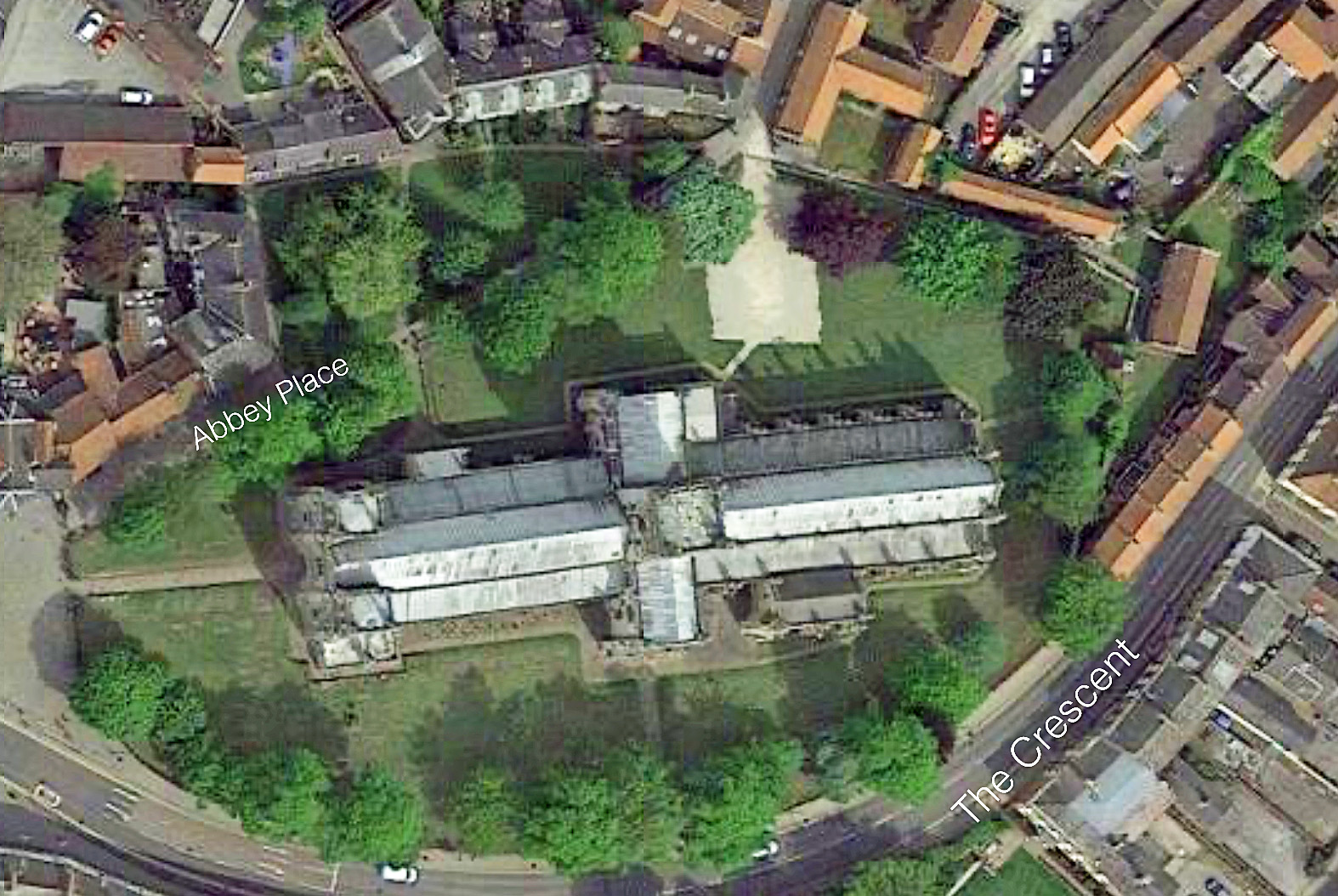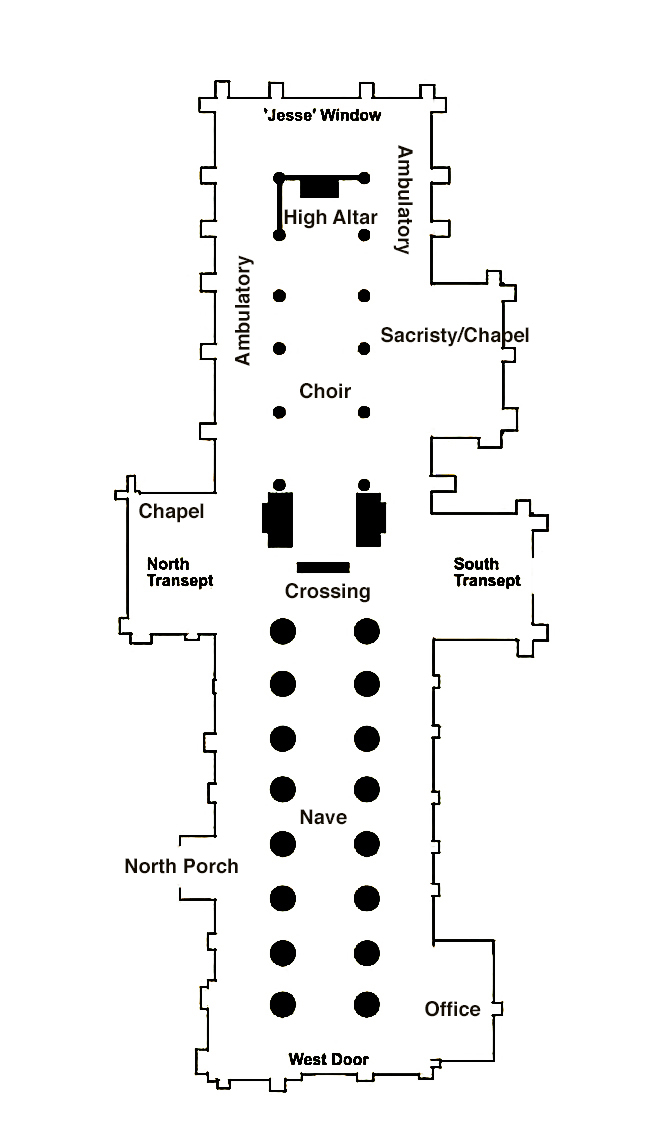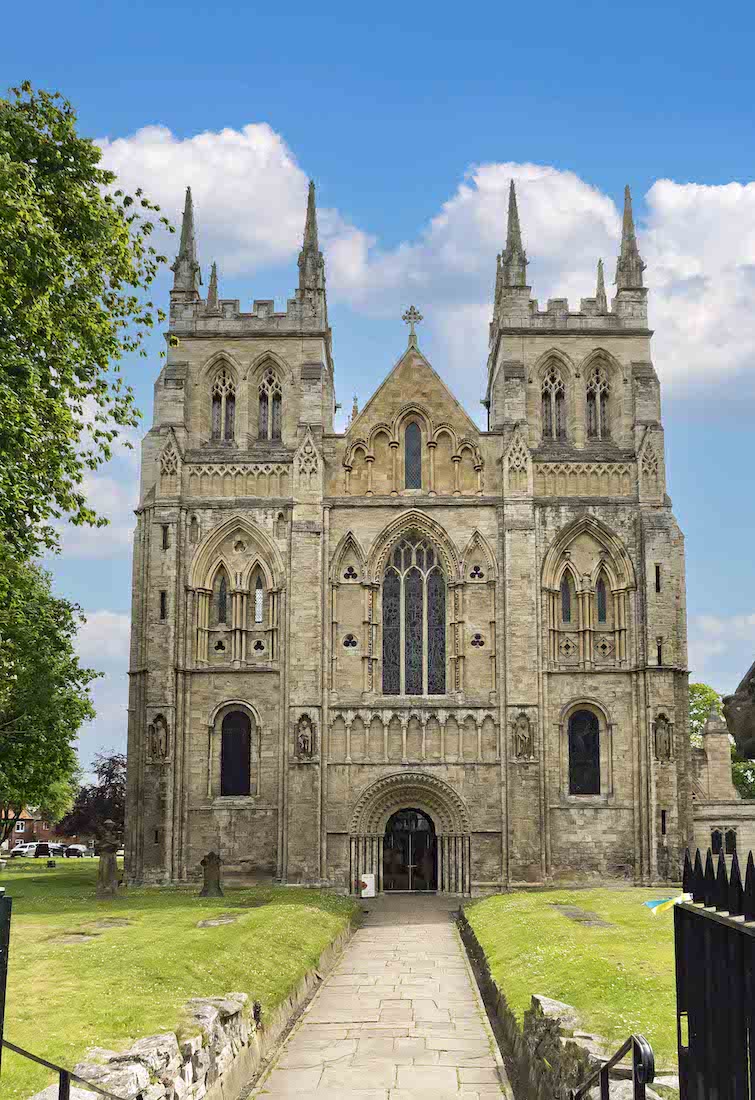A satellite view, plan, and brief history of this Abbey is given below. However, a click / tap on the links below give you immediate access to various parts of the Abbey.

SATELLITE VIEW
Selby Abbey is delightfully surrounded by its own area of parkland – green lawns and trees. The Abbey is sited so that its main axis is almost exactly east-west geographically, with the sanctuary at the east end. This means that there will be no difficulty in identifying geographical directions wth the liturgical directions (capital letters, e.g. East) which we use on these sites.
The Abbey has a cruciform shape with two Western corner towers, and a larger central tower. There is a porch on the North side, a chapel attached to the North transept, a larger sacristy / chapel on the Southeastern wall, and a small rectangular addition at the Southwestern corner, which is the Abbey office.
In our exploration of the Abbey, we shall begin near the West door and walk around the Abbey in an anticlockwise direction, finally arriving back at the West door where we make our entry.
PLAN
We include this simple Abbey plan for interest, but it adds little to what we already know.
In our exploration of the Abbey interior, we begin at the West door, and investigate in turn the nave, the crossing and transepts, the ambulatory, and finally the choir and sanctuary.

HISTORY
Years Built: 1069 – 1465
Address: The Crescent, Selby YO8 4PU, UK
Although Selby Abbey is now a parish church, it was one of England’s great monastic churches, built on a grand scale and to a high level of architectural and artistic mastery. Founded in 1069 by William the Conqueror, three years after the Norman Conquest, and added to over time, it is a key building illustrating the transition from Romanesque, or Norman, to a fully developed Gothic style. It is also significant for surviving intact the Dissolution of the Monasteries in the 1530s. The painted and stained glass of the fourteenth-century east window illustrates the Tree of Jesse and is held in place by one of the best example of curvilinear tracery in Britain. There are also rare examples of fourteenth-century carved figures, which sit astride the parapets within and outside the choir. These important features have been affected by centuries of industrial activity as well as atmospheric salinity from the nearby North Sea, which has seen deterioration of the exterior stonework, highlighted by one of the pinnacles falling from the central tower onto the transept. Fire damage to the abbey in 1906 created long-term issues in some surviving stonework that has become problematic in recent years. Furthermore, as a parish church within a community badly affected most recently by the closure of the area’s coalfields, Selby Abbey lacks appropriate funds for its restoration.
Selby is a relatively rare survivor of intact medieval monastic architecture in England on a large scale. Selby’s importance before the Reformation cannot be overstated. In addition to its architectural merits, including close parallels with the iconic Durham Cathedral, it was also a mitered abbey, a papal privilege allowing the abbot to sit in the House of Lords. Beyond its architectural and historical significance, Selby Abbey is a parish church, open for prayer and worship everyday of the year. It is an integral part of the town. However, the parish suffers from a significantly higher than average level of unemployment. The town has been dependent in the last fifty years on four major industries—ship building, power generation, mining and cattle food production, all of which have declined dramatically. With Selby’s social and economic problems standing in tandem with the worst of the northeast of England, it is vital that the abbey be able to remain open to offer help to anyone in the community.
A lengthy history can be found at the Wikipedia site
https://en.wikipedia.org/wiki/Selby_Abbey
A more light-hearted look at Selby can be found in ‘Selby: the wonkiest abbey in Yorkshire’ by James Alexander Cameron:
https://stainedglassattitudes.wordpress.com/2015/09/17/selby-the-wonkiest-abbey-in-yorkshire/



